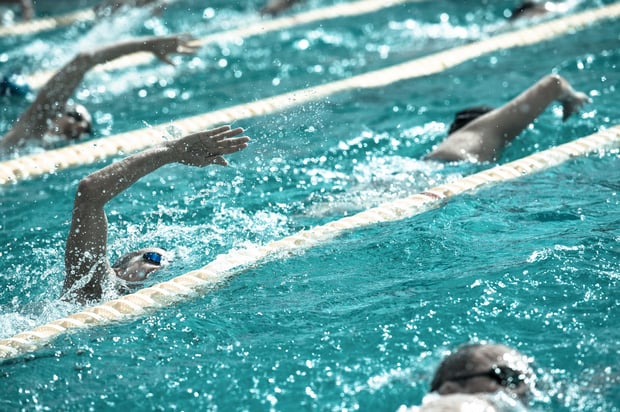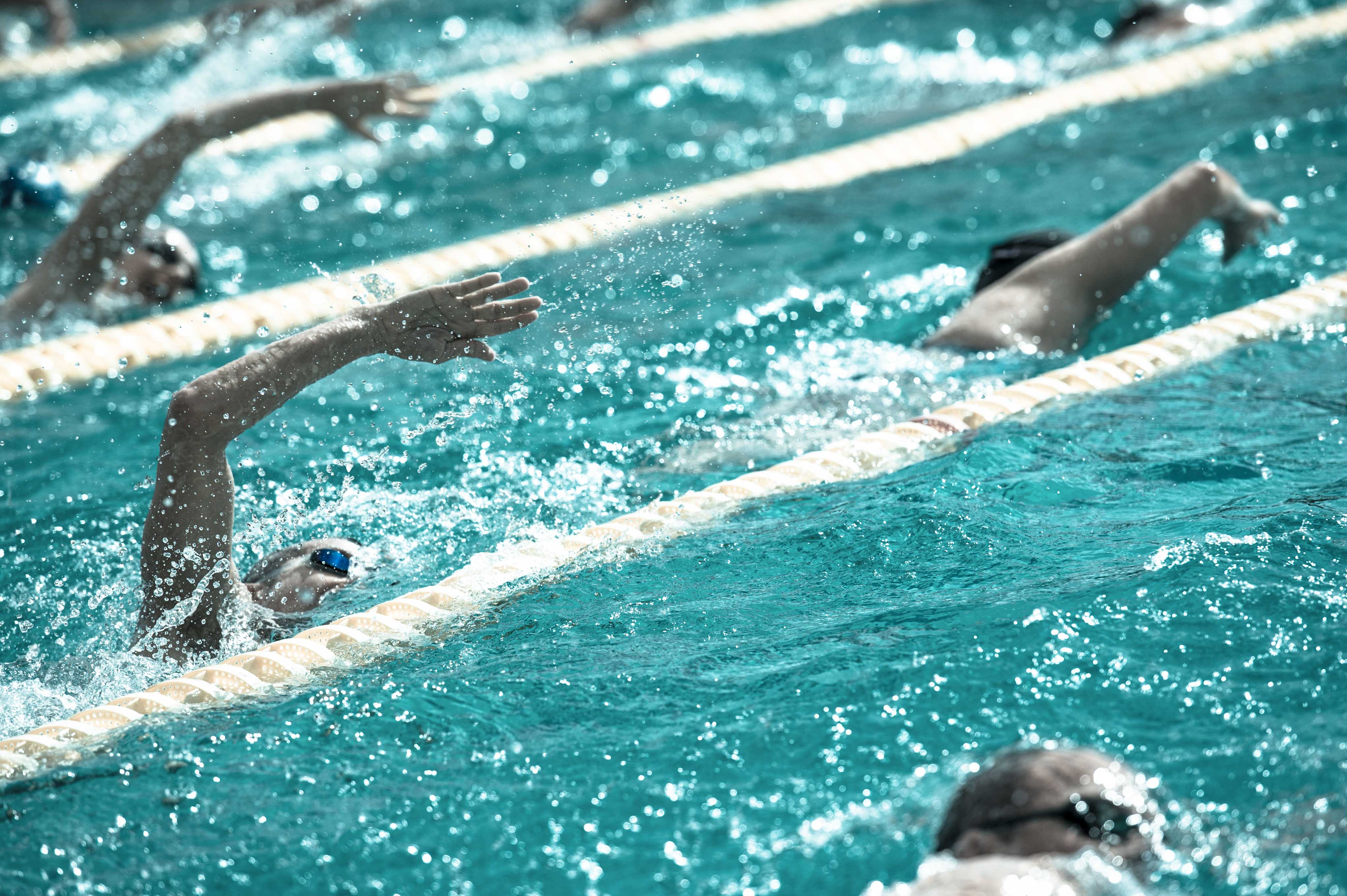The Importance of Dryland Training for Swimmers

Coaches should incorporate swimming dryland training to maximize swimmer performance. The type of swimming dryland training may change over time, perhaps incorporating more weights once the athlete reaches the collegiate level, but all programs should incorporate dryland workouts. The purpose of dryland training for swimming is to improve the swimmer’s power, athleticism, and overall speed in the pool. Here are five major reasons to incorporate dryland training into a swimmer’s program:
1. Building Muscle and Bone Density
It is very difficult to build muscle through swimming alone. Despite the repetitive movements and whole body integration while swimming, muscle groups are not triggered to develop significantly. When a stress is placed on a muscle, such as bodyweight or a dumbbell, the muscle is signaled to resist the downward force of gravity by contracting. Strength exercises on land create a number of these stressors. When muscles respond, as in the lifting of a dumbbell, micro-tears in the tissue occur and cause soreness. As the body repairs these micro-tears, muscle builds up. Pulling one’s body through water cannot create this stimulation for tissue growth as much as strength exercises on land because the perceived force of gravity is reduced.
Another benefit of weight-bearing strength training for swimmers is that it increases bone density. . Swimmers have a tendency to have low bone density because they spend the majority of their training in the pool. Dryland training and loading weight on bones stimulates bone tissue to develop.
2. Core Strength
The core is critical to swimming. It maintains the correct “downhill” body position of the swimmer when horizontal to minimize drag. It enables the swimmer to accelerate faster in a turn, and carry more speed off a dive with a clean entry. Swimming dryland training often requires the integration of various muscles in complex movements, with the core at the center of the action. In order to transfer force efficiently from one part of the body to another, an athlete needs a strong core that engages quickly. This applies to every part of a swimmer's race, from the hip rotation in freestyle to the underwater dolphin kick off the wall.
3. Injury Prevention
The repetitive motions in swimming can lead to chronic injuries. Dryland training varies an athlete's patterns of movement and challenges their muscles to learn new exercises. It can target areas left underdeveloped by swimming and relieve some of the demand placed on more stressed muscle groups. Stronger muscles also help distribute force correctly, putting less strain on joints, tendons and ligaments.
4. Learn Correct Biomechanics
Especially for swimming dryland training, athletea must learn correct body position for a variety of exercises. This requires focus, muscle recruitment, and coordination. Swimmers develop better posture through core engagement and upper body strength, which helps improve breathing in the water. Balance and stability improve with single-legged exercises and strengthening of large muscle groups.
5. Generate More Power
Dryland training develops power unmatched by any training a swimmer can do in the pool. Once the athlete develops a baseline level of strength, there are countless exercises that can be done in quick bursts of energy. Explosiveness develops well on land, where the athlete has a harder surface to push off of. Squat jumps, lat pull-downs, and push ups are just a few of the exercises that develop power for the pool. To learn more about the benefits of dryland training for a swimmer's body check out this article.
Recap
Dryland for swimming is critical to a swimmer's development. It challenges the athlete to execute new movement patterns under a greater load than in the pool. Athletes tap into new sources of power and speed on land, translating to greater performances in the water. For more on dryland training for swimming, check out this post.
About the Author

At Bridge, we are all athletes and coaches first. As athletes, our team has experienced everything from riding the pine on JV, to winning NCAA championships, to competing in the Olympic Games. As coaches, we have helped countless athletes reach their full potential, winning everything from age group section championships to Olympic Gold Medals.
Related Posts

The Best Bench Press Variation You’re...
This post is part of our Coaches Corner series with Taylor Rimmer. Taylor is NSCA-CPT, StrongFirst...

Does Powerlifting Harm Heart Health?
A recent study has discovered that a 12-week supervised strength training program (SSTP) may result...
-1.png)
Barefoot Running: Is It For You? |...
Run Free: Consider Less Cushion
Updated October 2020:
With more athletes looking for ways to...


